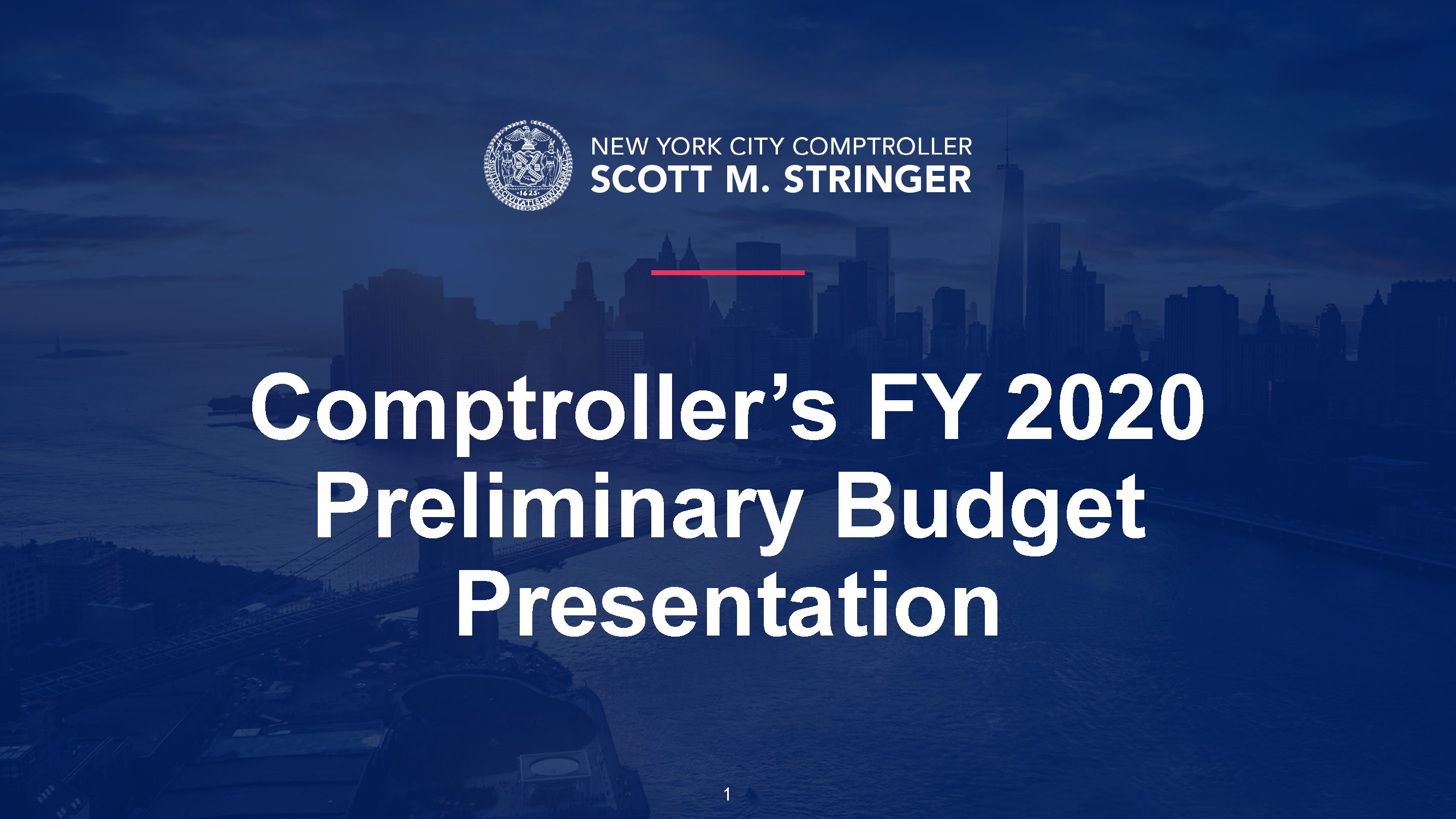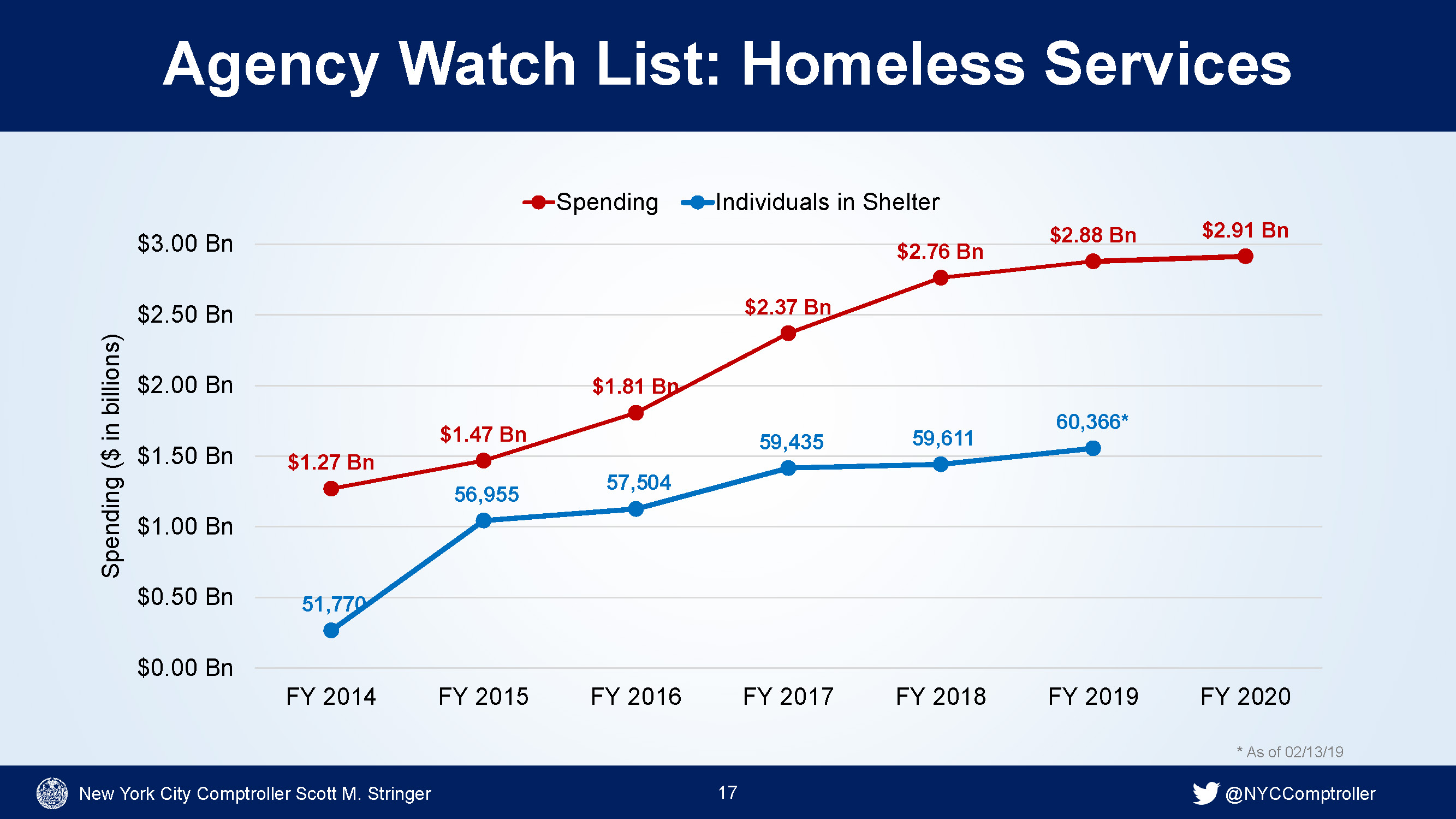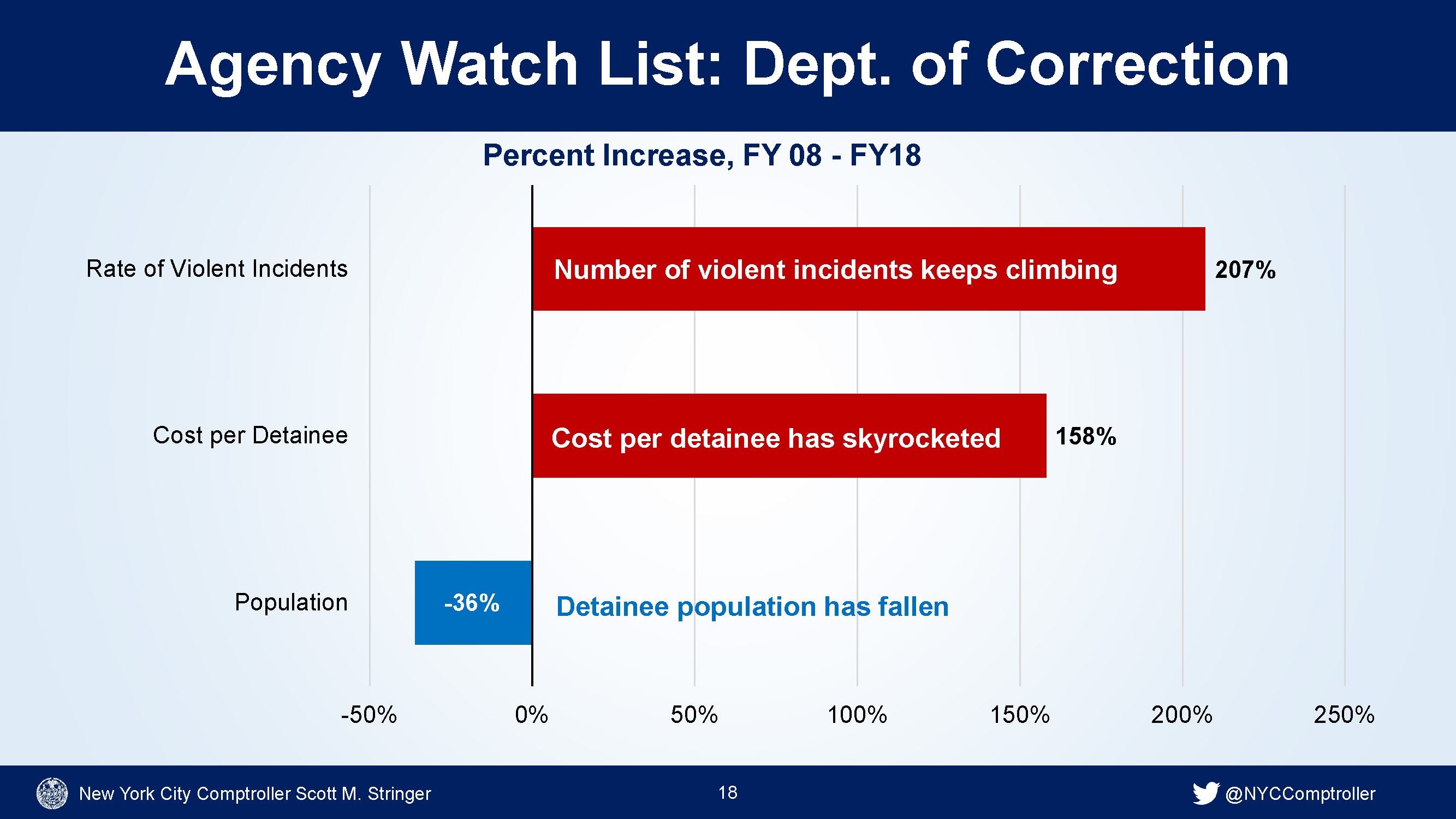Agency Watch List reveals lack of accountability and results despite record spending at the Department of Correction, Department of Buildings, and multi-agency spending on homeless services
Comptroller’s analysis of the City’s proposed FY 2020 budget shows budget gaps closed using numerous one-time actions instead of recurring savings
Stringer calls for increasing the City’s budget cushion to 15 percent of total spending by FY 2023 to protect the social safety net

New York City Comptroller Scott M. Stringer delivered his annual analysis of New York City’s Preliminary Fiscal Year 2020 budget which revealed a lack of financial preparedness for potential future economic uncertainty, and an absence of tangible results despite increased record spending at three City agencies. Comptroller Stringer’s analysis found the proposed FY 2020 budget relies on numerous one-time actions to balance the budget and called for a goal of increasing the City’s budget cushion to 15% of total spending to sufficiently prepare the City for unforeseen events and protect programs that lift up New Yorkers. Additionally, the Comptroller’s Agency Watch List – which spotlights city departments without demonstrable results for their spending – revealed record multi-agency spending on homeless services, which is projected to reach nearly $3 billion even as the shelter population continues to rise. Meanwhile, the Department of Correction is spending over $300,000 per detainee as incidents of violence increase. New for this year, Comptroller Stringer added the Department of Buildings to his Agency Watch List due to a 252% increase in construction accidents since FY 2014, despite increasing spending by 62% over the same period.
“The City’s budget is a statement about our values, it’s our opportunity each year to consider how we are serving working families and promoting policies that will empower all New Yorkers. While there are some critical initiatives included in the FY 2020 budget, we must be doing more to reach a balanced, sustainable budget and ensure that city agencies are accountable for the public money they spend,” said Comptroller Stringer. “Our budget needs to be balanced for the long term, not just for the next year, so that we can ensure that vital initiatives and services for families and seniors go uninterrupted regardless of the broader economy. To reach that goal we need to build up our budget cushion and conduct a more rigorous review of agency spending to root out inefficiencies and waste.”
The Comptroller’s wide-ranging presentation covered several aspects of the City Preliminary Budget and the state of the City’s economy, including:
Overview of the FY 2020 Preliminary Budget
- Spending growth is 2.1%, adjusted for the anticipated use of the FY 2019 surplus to prepay certain FY 2020 expenses;
- Spending is projected to grow at an average annual rate of 2.3% over the entire Plan period, fiscal years 2019 to 2023;
- In contrast, revenues are projected to grow at an average rate of 1.8% each year until FY 2023, resulting in budget gaps of $3.5 billion in FY 2021, $2.9 billion in FY 2022, and $3.3 billion in FY 2023; and
- So far this year, the February Plan shows a projected $3.2 billion budget surplus in FY 2019, $1.4 billion less than the $4.6 billion budget surplus of FY 2018.
The Economic Outlook is Clouded with Risk
- While the City’s economy is still growing, the Comptroller’s office forecasts that growth will slow in coming years;
- The short-run stimulus effects of federal tax cuts and spending will wear off just as the national economy reaches the late stages of the nearly decade-long expansion, and global growth slows sharply;
- As a result, economic growth in the City is expected to decelerate, with job growth falling from nearly 90,000 new jobs per year since the end of the Great Recession in 2010, to under 35,000 on average from 2020 through 2023; and
- The State Budget faces growing challenges, following a $2.3 billion personal income tax revenue shortfall – which puts State aid to the City at increasing risk.
City Must Manage the Budget More Aggressively to Address the Growing Risks




No comments:
Post a Comment